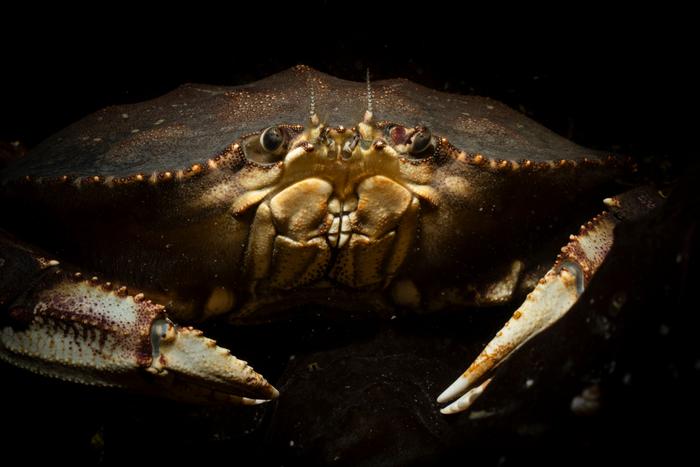A recent study led by researchers from UC Santa Cruz has unveiled alarming findings regarding the vulnerability of marine species in California’s coastal waters due to climate change. The research highlights the significant threats posed to critical fisheries, including the economically important Dungeness crab, Pacific herring, and red abalone. These species are positioned at the forefront of potential ecological and economic crises as a result of rising ocean temperatures, deoxygenation, and increased acidification, which are all direct consequences of climate change.
The study, titled “A Collaborative Climate Vulnerability Assessment of California Marine Fishery Species,” was published in the journal PLOS Climate and marks a critical effort to support fisheries management strategies that are responsive to climate-related challenges. It involved collaboration among various stakeholders, including the California Department of Fish and Wildlife (CDFW) and fisheries scientists from the National Oceanic and Atmospheric Administration (NOAA). By integrating the knowledge and experience of various organizations, the researchers aim to lay the groundwork for adaptive management approaches that can better protect vulnerable marine ecosystems.
Timothy Frawley, an assistant project scientist at UC Santa Cruz’s Institute of Marine Sciences, and Mikaela Provost, an assistant professor in UC Davis’s Department of Wildlife, Fish, and Conservation Biology, spearheaded this study. Their findings illustrate how the ongoing changes in ocean conditions will affect different species within California’s marine ecosystems. For instance, the Dungeness crab fishery, recognized as one of California’s top commercial harvests, generates significant revenue annually, but it remains at risk as environmental conditions continue to fluctuate unpredictably.
Frawley, who has a rich background in commercial fishing, shares a personal connection to the implications of this research. He is acutely aware of the economic repercussions that diminished fisheries could impose on local communities heavily reliant on marine resources for their livelihoods. The study aims to provide not just insights but practical recommendations for fisheries management that reflect on both the biological traits of these species and the economic realities of coastal communities.
In the assessment, the researchers evaluated 34 marine species based on their sensitivity and exposure to forecasted changes in oceanic conditions. They segmented the analysis into two critical timeframes—2030 to 2060 as a near-term projection and a longer horizon from 2070 to 2100. By doing so, they posited that demonstrating relative vulnerabilities across various species could better inform management protocols and research priorities for the CDFW, ultimately enabling a more prepared response to the ongoing crisis.
The sensitivity of species was gauged through several biological parameters, such as reproductive rates and habitat distribution. This approach provided clarity about how different species might react to alterations in their environment. The exposure component revealed the potential impacts of oceanographic disruptors—including shifts in temperature, ocean acidity, and the criticial subsurface oxygen levels—that exacerbate the already precarious state of marine life.
The implications of these findings are profound, especially for species like market squid and Pacific herring. Many of these species could exhibit shifts in their distribution due to changing ocean temperatures, potentially moving northward to cooler waters. Such movements threaten to disrupt established fisheries, affecting not merely ecological networks but also the economic structures tied to these resources in California.
Frawley’s team categorized the species into four levels of vulnerability: blue (least vulnerable), yellow, orange, and red (most vulnerable). Notably, red abalone was classified as highly vulnerable due to its limited mobility, making it particularly susceptible to drastic environmental changes such as marine heatwaves. As ocean conditions worsen over time, additional species—including the Dungeness crab, Pismo clam, and pink shrimp—are likely to fall into the red category, further signaling the dire reality facing California’s marine fisheries.
The economic weight of California’s fisheries cannot be understated. The Dungeness crab fishery contributes around $45 million annually, underscoring its importance for regional economies. However, other fisheries, such as the recreational fishery for red abalone, which was once valued at up to $44 million a year, have faced substantial restrictions, halting commercial efforts due to declines in fish populations. The alarming trend reveals how essential it is to prioritize conservation efforts for species that support local communities and economies.
In a broader context, the study advocates for a collaborative approach among fishermen, scientists, and policymakers. Frawley emphasizes the interdependence of all involved parties, highlighting that sustainability necessitates collective action. Effective management strategies not only benefit the environment but also ensure the livelihoods of those dependent on these marine resources.
In conclusion, the study underscores the critical need for ongoing assessments to protect California’s vulnerable marine species as climate change continues to alter their habitats and ecosystems. By prioritizing these vulnerable fisheries, researchers and policymakers can work together towards mitigating the adverse effects of climate change, ensuring the long-term sustainability of marine resources and the communities that rely on them.
Subject of Research: Vulnerability of California’s Marine Fishery Species to Climate Change
Article Title: A Collaborative Climate Vulnerability Assessment of California Marine Fishery Species
News Publication Date: 12-Feb-2025
Web References: http://dx.doi.org/10.1371/journal.pclm.0000574
References: [TBA]
Image Credits: Pat Webster @underwaterpat
Keywords: Climate Change, Marine Species, Fisheries Management, Dungeness Crab, Vulnerability Assessment, Ocean Conditions, California Marine Ecosystems.




